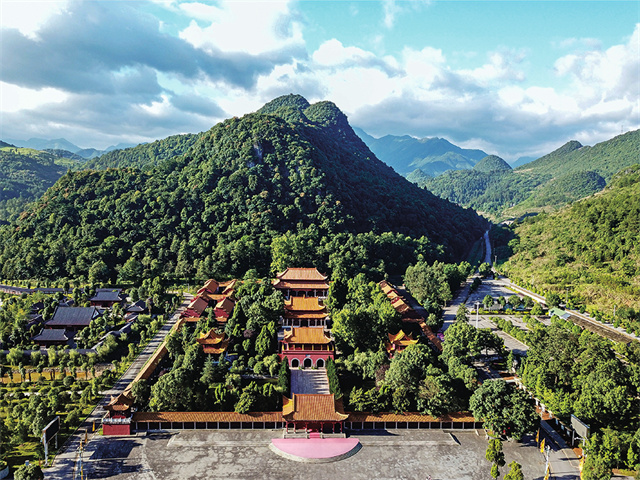Humanities & Landscape
Jiuyi Culture-Yongzhou
Linking Hunan Province with coastal cities in south China, Yongzhou is famous for many sites of historic and cultural interest. These include Jiuyi Mountain where Emperor Shun died during his southern trip; Liuzhi Temple built in memory of the distinguished writer Liu Zongyuan (773AD-819AD) of the Tang Dynasty, and the Wuxi Stele Forest Scenic Area where hundreds of stone carvings have been left by many celebrities from history.
Moreover, the unique landscape and fantastic culture make Yongzhou a wonderful place to visit in Hunan Province. Jiuyi and Yangming mountains have amazing scenery. Panwang Hall is a holy place for the Yao people to make sacrifices to their ancestors. The ancient battlefield in Qianjia Cave exhibits the Yao people's unconquerable spirit. Nvshu, or womenn scripts in Jiangyong County, a unique writing system only learned and used by local women, show the diversity of human culture. All of these splendid scenes and rich cultures attract tourists from home and abroad to enjoy an unforgettable experience here.
The Mausoleum of Emperor Shun

(Photo source: hunan.gov.cn)
The Mausoleum of Emperor Shun is a national key protected cultural relic unit, an exchange center across the Taiwan Strait, one of the ten historical and cultural landmarks in Hunan Province, one of the ten cultural heritage sites in Hunan Province, one of the ten tourist attractions in Hunan Province, a patriotism education base in Hunan Province, and a national defense education base in Hunan Province. In 2011, the memorial ceremony of worshiping Emperor Shun, the founder of Chinese moral civilization, was included in the list of national intangible cultural heritage items.
Wuxi Stele Forest Scenic Area

(Photo source: hunan.gov.cn)
Nvshu (Women's Script) Garden

(Photo/Mo Sheng, hunan.gov.cn)
In order to protect Nvshu culture, the local government built the Nvshu Garden in Puwei Village. It is an important research base promoting and researching Nvshu works and also a good platform to demonstrate the charm of Nvshu culture. There is a major building and four halls in the backyard of Nvshu Garden. The major building is the classroom of Nvshu School. The four halls include a functional building and needlework building on the left and Nvshu Handicraft Exhibition Hall and Nvshu Painting and calligraphy exhibition hall on the right. The calligraphy, pictures ,and video briefly demonstrate the academic achievement and local customs.
Chinese source: official website of the Hunan Provincial Department of Culture and Tourism; hunan.gov.cn; yzcity.gov.cn

